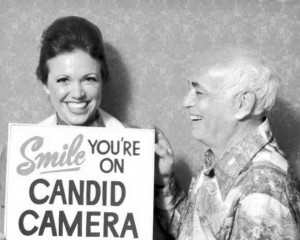 We’re now in the immediate aftermath of Hockey Day in America,with 16 games in the books — just emerging from the first turn into the back stretch. There’s an increased volume of grumbling among certain sectors of the fan base, so it’s time to take some snapshots of the club and a long hard look at what the pictures show.
We’re now in the immediate aftermath of Hockey Day in America,with 16 games in the books — just emerging from the first turn into the back stretch. There’s an increased volume of grumbling among certain sectors of the fan base, so it’s time to take some snapshots of the club and a long hard look at what the pictures show.
By The Numbers: Stats Valid, Invalid and Improbable
Though not all of the numbers through the Ducks game are available, there are enough statistics handy to paint a numeric landscape of the season thus far.
Of course, the glaring numbers are a total of 10 points, 4-10-2, 30th in the NHL. The 28th ranking in goals per game is a big factor in that, of course, just slightly below the 25th place ranking in shots per game, and the 26th slot held by the power play. It’s tough to win a lot of games with fewer than 2.1 goals per game — no matter what level of goal-tending you get. You can make a persuasive argument that the power play statistic is a bit misleading, as it is skewed by a horrific five-game string early on. Even when they are not converting on the power play, they are maintaining possession in the zone, using different passing lanes, and creating chances.
However, possession at 5-on-5 is a different story. As usual, the Blue Jackets do well in the Hits category, tied for 6th in the NHL. That, however, is a largely illusory statistic. First, the interpretation of “hit” varies widely from arena to arena. However, more significantly, a hit can only be recorded when puck possession is disrupted by the contact. Hence — in any arena– if you’re registering a lot of hits, you are losing the time of possession battle with your opponents. Face-offs — which also impact possession — are a mediocre 49.5%, good for a 20th place ranking. In fairness, however, the Blue Jackets are closer to the top than the bottom in this statistic.
Fans keeping close tabs on the current road trip will run scurrying to their liquor cabinets over this next number. Through 15 games, the Blue Jackets have the fewest giveaways in the NHL, with 57. No worries. . . I’ll wait while you go get that drink. . . . Of course, the 0 – 3 performance on this road swing has been largely due to ill-timed turnovers — and we’ll look more closely at the prime suspects later. The other prime reason for the losing string — untimely penalties — is also borne out by the numbers. Only Calgary has more penalty minutes per game than Columbus — who spends 17.5 minutes per game in the box. Fortunately — at least until the Anaheim game — the penalty kill has been solid, ranking 11th in the NHL at 83.3 percent.
Two prime defensive statistics do not reflect kindly on the Blue Jackets. They are 29th in blocked shots, and 30th in takeaways — sharing those two slots with another club who has struggled early — the Los Angeles Kings. Takeaways and blocked shots obviously reduce the pressure on your goal-tending, facilitate transition and ultimately promote offensive opportunities. So, the numbers may mislead in some respects, but in others they validate what we’ve seen on the ice. Let’s move away from the numbers to the ice.
On The Ice: Good Efforts, Bad Thinking & Missing Pieces
The game is played on ice, not in numbers, and it is ultimately there that fortunes are determined. As might be expected, the on -ice experience has been a wildly erratic experience thus far.
The New Kids on the Block
Of course, the off-season was dominated by the wringing of hands over the deal that sent Rick Nash to the Rangers for Brandon Dubinsky, Artem Anisimov and Tim Erixon. Where would the
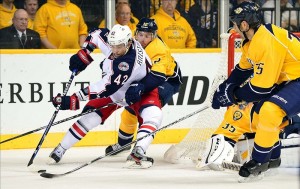
scoring come from? Nash has done well in The Big Apple, leading the club with 3 goals, 9 assists and 12 points . Dubinsky has 1-7-8, Anisimov 4-2-6 and Erixon 0-2-2, for a combined 5-11 -16. So, from a strictly numeric comparison, the Blue Jackets have received more than they gave away. Dubinsky, to be sure, has struggled to find the back of the net, and Erixon has only seen limited action. Anisimov has shown both speed and skill, and Nick Foligno (2-4-6) has really been under-rewarded for his efforts. Certainly, this new blood shows the potential to be very good — but potential does not win games. Still, with an abridged camp, lots of new bodies, etc., there is reason for optimism with these aquisitions. There is a lot of skill, determination and leadership there, and Dubinksy in particular has emerged as a late contender for the vacant “C” slot.The Returning Cast
Of the returning forwards, Prospal, Letestu, Brassard and Calvert have been the best performers. While Prospal can show his age — he celebrated his 38th birthday last night with a goal against Anaheim — he has that level of veteran savvy that the squad needs, and uses craftiness to maintain possession and create opportunities. Letestu has demonstrated that his early scratches were a mistake, and Calvert has overcome a slow, mistake-ridden start to be one of the most dangerous guys on the ice. He needs to find a way to channel his speed and energy into more consistent scoring threats, but that will come. Insofar as Brassard is concerned, fan reactions seem to be perpetually polarized. Some see Brass as a finesse player without enough grit, while others appreciate his skill and the opportunities he creates. Both camps get frustrated with inconsistency, and his apparent reluctance to fire his own shots on net. However, the fact remains that Brassard is at the top of the heap in terms of vision, puck handling and passing — so it should be no surprise that he also leads the forwards in points. (It is, of course, a commentary that defenseman Fedor Tyutin continues to lead all skaters in points). Honorable Mention among the forwards goes to Derek MacKenzie, who has anchored the fourth line and shown tremendous versatility in maintaining an aggressive forecheck, creating opportunities with speed and cycling ability, and more than the usual degree of toughness.
The chief disappointment among the forward ranks has been R.J. Umberger. While he showed more spark against Anaheim, he has had a miserable first third of the season. Always a fan favorite,
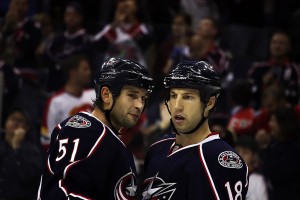
due to his Ohio State ties, his blue collar approach to the game, and his more demonstrative leadership style, he has not been a leader on the ice. His lack of puck skills was exposed last season, and I commented then that he needed to emphasize that work in the off-season. That didn’t happen, and while R.J. earned PR points for serving as a coach for the Buckeyes’ mens team during the lockout, it did nothing for his skills. He has been a turnover machine in the early going, and perpetuates the single-minded move down the wing, not seeing other players — inevitably leading to being cut off at the half-wall and losing the puck. His physical play– normally a signature of his game — has been similarly lacking, ranking only ninth on the club in hits. Simply — and perhaps brutally — stated: at his current level of play, Umberger cannot consistently compete with top six forwards or top four defensemen.
Derek Dorsett has been disappointing, but for different reasons. Todd Richards apparently entered the season counting on Dorsett to be part of the top six– a strategy that we’ll examine in a bit. While nobody can question Dorsett’s heart — at least in the offensive zone — he simply lacks the skill to consistently convert the opportunities he creates through his hustle. Grit and hustle are terrific attributes, but they are wasted if not combined with intelligent play and the ability to finish. Unfortunately, while Dorsett can ignite spirit with a fight, he has more frequently proven to be a rally killer through a turnover, an ill-timed and unnecessary penalty, or a missed defensive assignment. His enthusiasm wanes significantly on his own side of the red line, and has been caught more than once on Bill Davidge’s period break videos playing a zone defense while the opposing forward cruises by unopposed. Jared Boll? He’s a better fighter this year. ‘Nuff said.
Defensive Blues
The blue line staff — reputed to be the strength of the club, have had their own issues. Fedor Tyutin and Jack Johnson have been workhorses — carrying the mail for the defensive corps night in and night out. Johnson leads the NHL in TOI, and Tyutin is not far behind. As noted above, Tyutin is leading the squad in points (with Johnson and Wisniewski only three points back), and is all over the ice. He gets criticized by some segments of the fan base, but watching film reveals that he is frequently double-teamed, with little help from his line mate — Nikita Nikitin — or is attempting to make up for one of Nikitin’s defensive lapses. Nikitn has been the hands down “winner” of the worst defenseman award to this point of the season. He has appeared slow, disengaged in the offensive zone, and hesitant in his own zone. He has been the blue liners’ version of Umberger in terms of turnovers, several of which have translated into immediate, game-winning goals for the opposition. Wisniewski has been either terrific or awful, though the past couple of games have shown improvement. While John Moore has been quietly effective on the third pair, Adrian Aucoin has been demonstrating his age, and David Savard proved to be wholly inadequate in the seventh defenseman role. Tim Erixon has shown steady improvement, and should challenge for Aucoin’s spot. Cody Goloubef was very impressive in his stint with the big club, and gained several rungs on the depth ladder through his play.
The Blue Ice — A Hung Jury
A dubious hallmark of last season’s futility was the poor play between the pipes — partially due to injury, partially to poor play. Sergei Bobrovsky has teamed with Steve Mason this season, and there has been significant improvement in the blue ice, though the numbers may not reflect it. Both Mason and Bobrovsky have been victimized by spotty defensive play in front of them, and have also suffered from ills of their own making. Bobrovsky appears to have trouble picking up the puck from up high, resulting in some soft liners from the blue line finding the back of the net. Mason also has bouts of lost concentration, seeming surprised with the opponent dares to attempt a shot from an unusual area. His major flaw, however, has been a lack of rebound control. He consistently surrenders meaty rebounds in the blue ice, and many find homes. Still, Mason has demonstrated a better glove and improved positioning this season. Time will tell, but I’d still give the early nod to Bobrovsky, who has been better able to make the athletic save at a key time, and seems more in control of his crease. While some more key saves would have been appreciated, the record cannot be blamed on the wielders of hockey’s Tools of Ignorance.
Idle Skates Are The Devil’s Workshop
Ironically, the most glaring issues for both the forwards and the defense are different manifestations of the same malady — idle feet and puck fixation. In the club’s own zone, the lapses have come
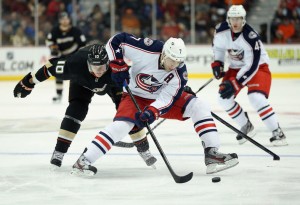
when the players are not moving their feet, and remain focused on the puck. This creates opportunities for the opposition to gain some wide open back-side opportunities. It also hampers crisp exits from the zone. When the defensive skates are moving, two defenders are putting pressure on the puck, passing lanes are neutralized, and shots come almost exclusively from the perimeter. When the eyes get fixated on the puck, the skates apparently lose their ability of independent motion, and the opponent has ample time and space in which to operate.Ditto at the offensive end. When the team skates the puck into the zone — as they have consistently done well on the power play — it is a beautiful thing to watch. The puck gets cycled, players rotate through the offensive zone, defensemen pinch wisely and possession is maintained. When the dump-and-pray is in force, the movement ceases as the forwards get trapped against the boards and/or below the icing line. This leaves a vast gulf in the middle of the ice, too much space between the defensemen and forwards, and no means to maintain possession. These circumstances, combined with some curious structural calls and some mis-cast players, create the statistical oddities that we have seen thus far, where three of the top seven in scoring are defensemen, and five of the top seven in hits are forwards (Dorsett, Boll, Dubinsky, Brassard and MacKenzie).
One thing that cannot be questioned is the club’s level of effort. Unlike last season, when significant questions as to both desire and conditioning were frequently — and appropriately voiced, this club has shown character and intensity. They have generally played stronger in the third than in the first, and have put forth 60 minutes of effort (if not good play) in virtually all of the games. Technique is coachable. Desire is not.
The Intangibles: The Bench, The Training Room, The Front Office
While the players have to play the game on the ice, the more ephemeral aspects of coaching, front office support and injuries play an important role, particularly in an abnormally compressed season such as this one.
Todd Richards received the ceremonial removal of the Interim tag in the off-season, and brought in a full cadre of assistants to help blaze the new trail in Columbus. How is he doing? Frankly, it’s too early to tell. On the one hand, he seems to command the respect of his players, and has an appropriate demeanor behind the bench and with the media. On the other hand, he seems quick to adopt an almost “third party” approach to the players, referring more frequently to “them”, instead of the “us” I would prefer to hear. While we likely will never know the relative role of Richards and the now-departed Scott Howson in the demotion of Ryan Johansen to AHL Springfield, it was a curious move. Johansen had been lauded for his improved physical play and winning his share of battles, despite not scoring — and was gone the next minute. No game off in the Press Box, just an immediate ticket to Springfield. With the injuries that have afflicted the squad, one would have expected Johansen to reappear, but instead we’ve seen Sean Collins, Jonathan Audy-Marchessault and Nick Drazenovic. Some say that Johansen should not be “rushed”, but at this point that is relegated to the status of cliche. Johansen has little more to learn in the AHL, and exiling him the minute he struggles a bit does nothing to help the player’s character. Similarly, Richards benched Derick Brassard for undisclosed transgressions in a third period where the Blue Jackets had a potential game-winning power play at the end of regulation, and Brassard was withheld. Yet, R.J. Umberger has not seen his ice time reduced, nor have other more veteran players who have struggled with their games. Just sayin’ . . .
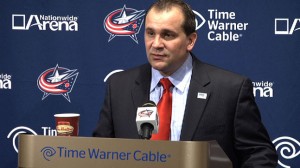
Certainly, Richards has been handcuffed by having only a six-day camp, a lot of new faces to integrate, and a spate of key injuries. In one game, only two regular defensemen were available, and Cam Atkinson has been missing from the front line corps for most of the season. More recently, both Anisimov and Dubinsky have gone down, fracturing the delicate chemistry that was just starting to emerge. Naturally, the Blue Jackets had the most games in the NHL coming out of the gate, which did not help matters. But, as golfer Sam Snead used to say — “You gotta dance with who you brung.”
It’s difficult to know which Blue Jackets offense Richards is responsible for — the constant-skating, perpetually dangerous squad that dismantled San Jose 6 – 2, or the “dump & chase” team that has dominated the first third of the campaign. The problem with the dump and chase — particularly in the current incarnation of the NHL — is that you really need extraordinary speed and chemistry to make it consistently work. If you don’t have those attributes, the “dump” simply becomes a turnover, or the “chase” results in three forwards mired against the wall or below the icing line — neither of which is a prime scoring location. On the other hand, when the club has been able to carry the puck into the zone, they have shown the ability to maintain impressive strings of possession and create repeated opportunities. Only time will tell which style the coach is trying to nurture. One historical note: the San Jose Sharks rode the dump & chase to a record for futility that still stands — 71 losses in the 1992-93 season.
Of course, the front office changes have been analyzed to death, but with Kekalainen now having arrived in the U.S. and slated to join the team in Detroit, the prospects for deals in March become very real. Too early to speculate as to who might come or go, but he inherits lots of resources — three first round picks, depth on the blue line — and has some fairly well-defined needs, probably led by a sharpshooter forward.
The Outlook: Glass Half Full
As the old saying goes — the optimist sees a glass half-full, the pessimist sees one half-empty and the pragmatist sees a glass that’s twice as big as it needs to be. Ask anyone around the Blue Jackets community, and they’ll tell you I’m a “half-full” kind of guy. Guilty as charged. I’ve spent too many years as a professional sports fan to get exorcized by short-term issues — and the Blue Jackets’ travails are short term. Just ask Cubs fans.
Entering the season, even optimists like me acknowledged that there was little margin for error if the Blue Jackets were going to contend for the playoffs this year, particularly under the contracted schedule that ultimately emerged, which favors squads with stable, familiar rosters. Everything needed to go right, and it really hasn’t. Youth, unfamiliarity, injuries and plain old bad luck have combined to make the beginning of the season more challenging than anyone wanted to see. Still, there are positives to be drawn. The Calgary and San Jose games were sixty minute efforts that should have resulted in two victories, rather than one. The club even played well for the majority of the last three games — all road losses. The common thread has been brief periods of loss of focus, or ill-timed physical or mental mistakes — the bad turnover, the stupid penalty– that results in the puck in the Blue Jackets’ net. The good news is that those things are fixable.
Unlike last year, the Blue Jackets have been in virtually every contest, and have demonstrated that they can play with anyone in the league. Of the 10 regulation and 2 overtime/shootout losses, 8 have been by a single goal (or two with an empty netter). At some point, puck luck will even out.
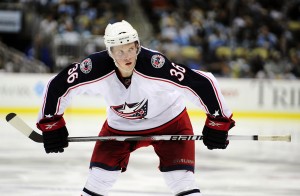
Will the Blue Jackets make the playoffs? I can’t say, and that’s not the measuring stick I’m using this year. It’s a side show season with a freakish schedule, and clubs like Columbus are being asked to accomplish a lot under very difficult circumstances. Imagine trying to tune your Corvette while driving down the freeway at 70 — same concept. What I do expect to see is consistent improvement and interesting, exciting play. The offensive efforts against San Jose and Phoenix show the type of skill and dynamism that Columbus fans have never seen. Dubinsky, Anisimov, Foligno, Atkinson, Johansen and others (Boone Jenner, T.J. Tynana) all have the talent to take this to the next level. Combine Moore, Erixon and young Ryan Murray with the likes of Wisniewski, Johnson and Tyutin, and you have a versatile defense that can be a force for a long time, with others in the wings. Bobrovsky and Mason will push each other, and there are other netminders in the system — including Dansk and Forsberg. A full complement of draft picks and some other pieces make deals doable — and even likely.
Truth be told, the beginning of this season was going to be rough — it’s just been a bit more jarring than anticipated. Let’s see what the next sixteen games hold. Check back with me then.